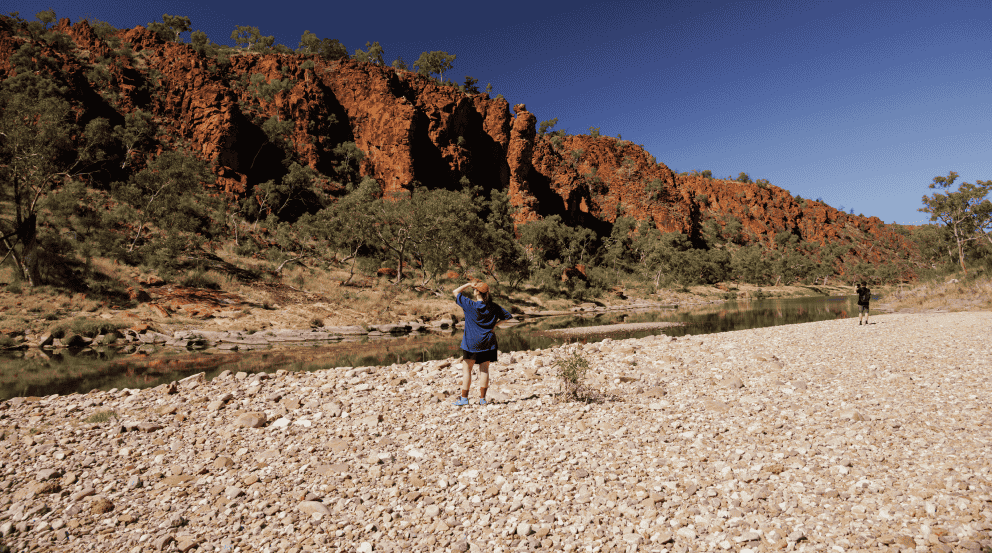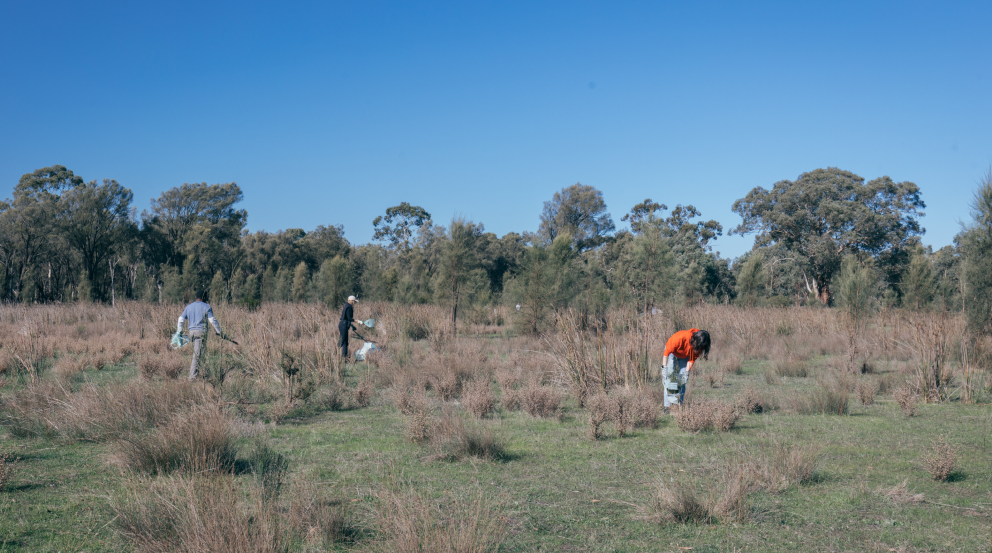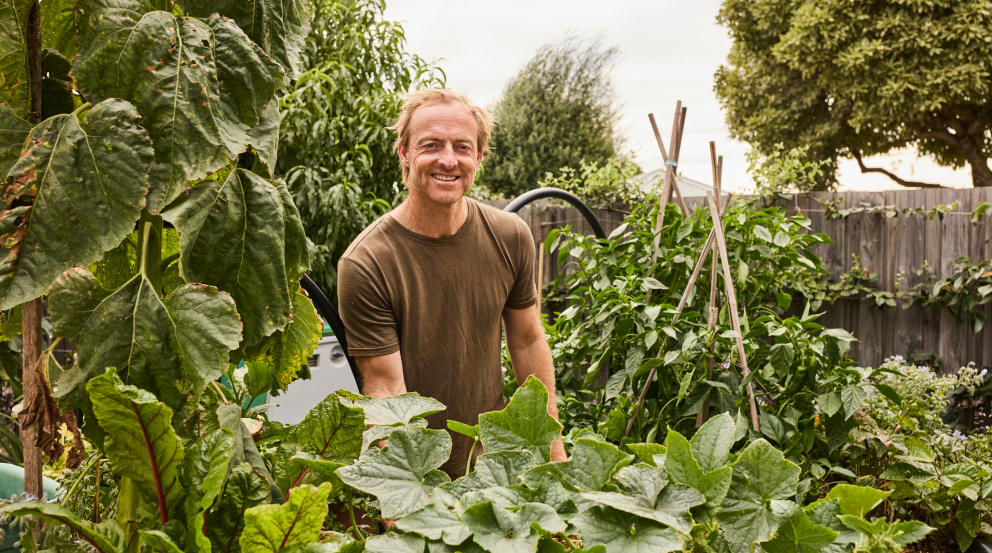Keen to do your bit to reduce waste from your very own kitchen? We sat down with Reground founder – and compost connoisseur – Ninna Larsen to get the dirt on the best ways to get rid of food scraps, even when you can’t compost at home.
Aussie households send 3.2 million tonnes of food to landfill every year, where it releases methane – one of the most potent greenhouse gases – into the atmosphere. That’s enough food waste to fill 5,400 Olympic-sized swimming pools. Gulp.
But when it’s disposed of properly and composted, green waste can actually be turned into a vital, nutrient-dense, life-sustaining resource. “Compost is critical for our soil, because it’s how we put nutrients back into the ground,” says Ninna Larsen, founder of Reground, a Melbourne-based social enterprise educating organisations and individuals on how to minimise waste.
But if you don’t have space to compost at home, there are still ways for you to take charge of your organic waste. If you’re keen to give back to the earth and seriously reduce the amount of waste going into your wheelie bin each week, Ninna has some tips to set you up for success.
1. First, have a look at your shopping habits
%2520(1).webp)
Before we even get into dealing with our food waste, let’s first try to minimise that waste. If you do a weekly grocery shop and often end up with floppy vegetables and gone-off meat or dairy products, try doing smaller, more regular shops, and planning for a couple of days worth of food at a time.
2. How much space are you working with?
Now we’ve tightened up our shopping habits, let’s dig into the food waste we do create. Because as long as we eat food, there’ll be scraps to dispose of. But if we shouldn’t put it in the bin, don’t have an organic waste pickup through our local council, and don’t have space for a backyard compost bin, how do we get rid of it?
There are a few options that’ll keep your food scraps out of landfill. Check with your local council website to see what initiatives they have in place for FOGO (food organics green organics) in your area. While you might not have a green-lidded organics bin, many councils have set up community organic waste hubs where you can drop off your food waste a couple of times a week.
You can also download the ShareWaste app to find people in your neighbourhood who’ll take your organic waste for compost, worm farms or to feed their chooks. Or look out for orgs like Cirque du Soil, a Melbourne business (and Bank Australia customer), who’ll collect your green waste and turn it into compost.
Ask yourself a few questions: do you have the time and space for a home compost setup? Do you have a garden on which to liberally sprinkle your compost? Are you keen to do your bit for the planet and avoid putting food waste into the bin, but would prefer to do something less labour intensive?
If you’re keen to start composting, great – keep reading. Not so keen but still want to do your bit? Call your local council about their organic waste initiatives, download ShareWaste, or contact Cirque du Soil.
3. Get yourself a bin, and find the right spot for it
.jpeg)
There are heaps of different bins on the market, but Ninna’s personal preference is the traditional Gedye-type bin, with an open base and a lid. You’ll also need an aerator or compost turner, and a caddy to chuck your kitchen scraps into.
The best place for your compost bin is on a patch of dirt, ideally the shade. “It’s fine if your bin gets a bit of sun, but if it’s too sunny your compost might dry out and you’ll need to water it,” Ninna advises.
4. Know what to compost
You can compost just about all your kitchen scraps, even bread (just make sure you remove stickers from fruit and rubber bands from herbs; these definitely aren’t compostable!). The only thing you shouldn’t throw into your backyard bin is meat, as it will attract rats. But if you’ve got a green bin and your local council does weekly or fortnightly collections, it’s fine to throw in almost everything, except cooked bones, oyster shells and pet waste.
5. Lay down your foundations
.webp)
Before you start throwing in food scraps, it’s important to lay down a base in your bin. “I always start a new compost by putting down some branches and dried leaves that will lift the contents of the bin off the ground and generate some aeration. Air is a really key element to your compost,” explains Ninna. “You don’t want to have food waste sitting directly on the ground, because it won’t get enough air through it.”
6. Use the lasagne technique
“The key elements of any good compost are water, nitrogen, carbon, air and time,” says Ninna. “Nitrogen is your food scraps. If there’s too much nitrogen, you can get blocks of food waste and it’s a bit gross. That’s why you need to balance it with carbon, like dried leaves from your garden, wood chips, or straw.”
Ninna suggests that every time you put something in the bin, you should add more carbon than nitrogen, then give it some oxygen. So add your food scraps, throw in some dried leaves, and then give it a turn with your aerator (even turning it once a week is fine). Keep doing this until your bin is full.
7. Then? Wait.
.jpeg)
You need to let your waste sit for six to eight weeks so it can do its thing. “All compost needs to go through a maturation process,” Ninna says. “If you hear people saying they can turn scraps into compost in eight days, it’s not going to be right. It’s like drinking wine that’s only just been bottled. There’s something in the aging process that helps it balance.” It’s OK to check on your compost and give it a stir during this time, but don’t add anything to it – no nitrogen, no carbon.
And when it’s ready? “It should look soil-like,” Ninna says. “It shouldn’t smell, or look like clumpy food waste either.”
8. How to use your glorious, nutrient-rich compost
If you don’t have a garden, there are still plenty of ways to utilise your compost. Use it on indoor plants, offer it to someone in your neighbourhood, or donate it to a school, community garden, or local farm. “Composting is a fantastic way to connect with your garden; it’s a great exercise in engaging in the natural cycle of things,” Ninna says. “The greatest happiness comes form caring for something – it’s why people have pets. So think of compost as your garden pet!”
Find out more about how Reground are helping Australians reimagine their waste now.
.webp)







